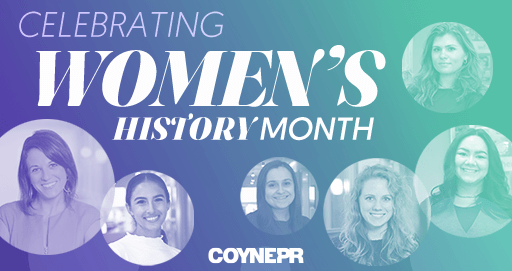Cision’s transition from “Help A Reporter Out (HARO)” to “Connectively” has resurfaced an age-old question: What is the best way for brands and public relations professionals to connect with journalists? The answer used to be simple – engage via email or through platforms like HARO. But with reporters churning out more stories than ever before thanks to the efficiencies fueled by artificial intelligence (AI), connecting them with experts and responding to queries in a timely manner is key. The hard part is finding where these queries are shared.
While the rise of AI has opened new doors, it has also created new challenges, like an increase in unauthentic editorial requests and information circulated amongst query-based platforms. This shift has caused distrust and disinterest in some of the resources our industry has grown accustomed to using. In response, journalists have gone elsewhere, with new platforms emerging to address this double-sided industry-wide pain point.
Now the question is, where is everyone going? While we all have our own “ins” and “outs” for this year, many writers are leaving behind familiar platforms to venture to new places to post editorial requests – and some of them you may never have heard of (until now!).
To nail this down, we tuned in to a webinar hosted by Alesandra Dubin, one of MuckRack’s top 10 most viewed freelance journalists this year, on where to find open press opportunities in 2024. The results are in…
- Help Every Reporter Our (HERO): If you loved HARO, now there’s HERO. Taking a back-to-the-basics approach, Peter Shankman, founder of HARO, created the new platform using a similar daily email format to help both journalists and sources connect around the world. The platform is completely free and you can sign up as a source here.
- Connectively: As HARO was being phased out, you may have seen less queries than before – but don’t fret! The new platform, Connectively, officially transitioned on April 2. So, if you were a HARO user, you’ll need to create a new account here. Daily HARO newsletters have been replaced with a new, searchable query feed within Connectively, which makes the process for identifying opportunities easy. However, the biggest change revolves around capitalizing on these opportunities since the platform requires PR practitioners to pay to share pitches after the initial free set.
- Press-Pulse AI: If you don’t feel like digging through media opportunities yourself, this can do it for you! Leaning into the benefits of AI and powered by GPT-4, this platform narrows down relevant queries to pitch, finetuning as you go. It sources from Connectively, using AI for streamlined email newsletters that notifies users of opportunities based on a set of provided background information.
- Qwoted: This platform thrives on visibility and transparency, building relationships between journalists and PR users through positive feedback loops. On the brand and PR side, users can respond to specific queries, similar to HARO, directly through the platform as well as build out client and spokesperson profiles for inclusion in a source database for media to reference and reach out.
- Pitchcraft: This is a relationship-building software company that connects PR professionals, writers and editors. The platform was co-founded in 2021 by husband-and-wife team Derrick and Kelsey Ogletree and is home to hundreds of carefully vetted journalists from national consumer lifestyle publications, including online, print, broadcast and podcast media. For an added bonus, the website hosts The Pitchcraft Diaries blog, offering a resource to PR professionals for learning to build and maintain journalist relationships.
- Press Hook: Press Hook serves as a brand marketplace connecting products with journalists for relevant stories. Journalists can go directly to brands of interest to ask for sample products found via brand press kits to be featured in roundups, gift guides or standalone stories.
- Press Loft: This European-based platform is used by more than 1,500 home décor and lifestyle brands – and they’re now expanding to the U.S. with a free two-month trial offer so you can experience this ‘Pinterest of press inquiries’ for yourself. Taking a passive, “no pitching required” approach, brands and PR users can upload images and corresponding information to a library on the platform accessible to journalists to pull for media opportunities. PR teams and brands get notified when an image is downloaded, with more than 20,000 images downloaded a month, and updates from media on where and when it is slated to run in coverage.
- Substack: Many members of the media such as Alesandra have taken to Substack for sourcing information. Substack newsletters serve as a great way for PR professionals to stay up to date on a journalist’s work, queries, tips and more, and some journalists have even built in a paid subscription option to offer access to webinars and more information. This tool, though used in a variety of ways, opens so many doors for relationship building. It’s an excellent medium for “getting to know” one another in this virtual world, allowing for PR pros to add that personal touch to their pitches.
- Social Media: It may seem simple, though it’s effective! Building a social media network of journalists that cover your clients’ topics can uncover media opportunities with a simple scroll (plus, you’re probably scrolling anyways!). Some media turn to X, Instagram stories, TikTok or Facebook groups like PR Czars to share quick turn queries.
While this is only a sample of the many ways we, as PR Pros, can connect with journalists, at the end of the day, it is essential to understand where your clients’ target media are getting information from and where they share their news. When speaking with media, always remember to ask about their preferences to ensure you are putting your time and resources into the right places – and making the most out of their time, too!
These platforms are a way to open the door, and, from there, it is up to PR Pros to build personal relationships with media that keep themselves and their clients top of mind as a trusted resource for when the right opportunity presents itself. Above all else, there is power behind these relationships, so don’t forget that the most powerful tool to invest in is yourself.




